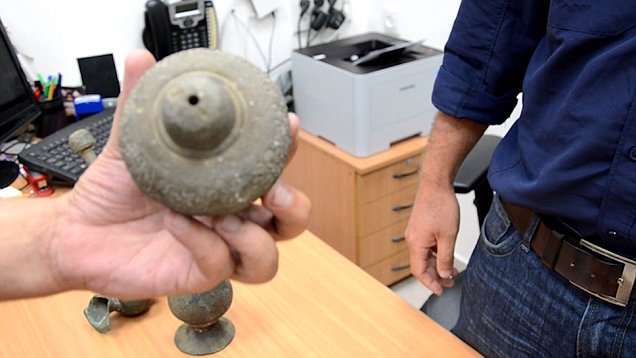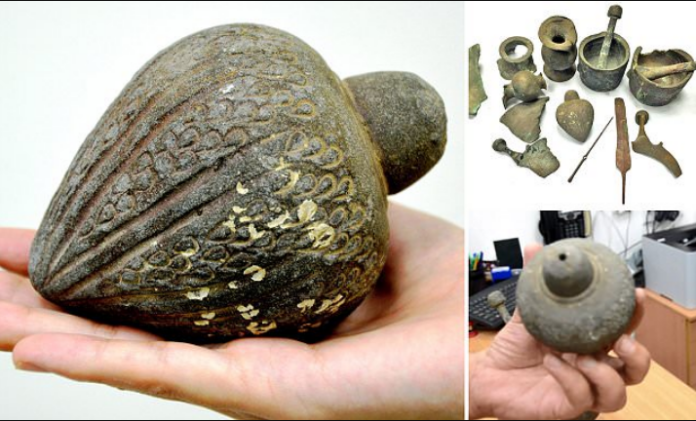The Crusades, marked by intense battles for control over the Holy Land, introduced a range of medieval weaponry that was both fearsome and innovative. Among the swords, crossbows, and maces, a remarkable discovery has brought to light a weapon far ahead of its time—a 700-year-old hand grenade. This ancient explosive device, recently recovered from the sea off the coast of northern Israel, offers a fascinating glimpse into the advanced military technology employed during the Crusades.
The Discovery of a 700-Year-Old Hand Grenade

In a significant archaeological find, a 700-year-old hand grenade made of clay has been unearthed from the waters off the northern coast of Israel. This ancient device, believed to date back to the time of the Crusades, is a testament to the ingenuity of medieval warfare. The grenade, designed to be filled with a flammable liquid and ignited with a fuse, was likely used as a deadly weapon against enemy ships, setting them ablaze in the heat of battle.
The Historical Context of Medieval Hand Grenades

Hand grenades, such as the one recently discovered, were not just isolated inventions but were part of a broader array of weapons utilized during the Byzantine and early Islamic periods, extending through to the Ottoman era. These clay grenades, filled with alcohol or other flammable substances, functioned similarly to modern Molotov cocktails. Once ignited, they were hurled towards enemy vessels, serving as a formidable tool in naval warfare.
The Archaeological Significance of the Find

The hand grenade, along with other ancient artifacts, was recovered over several years by Marcel Mazliah, a worker at the Hadera power plant in northern Israel. His collection, now in the hands of the Israel Antiquities Authority, includes items of immense historical value, such as a 3,500-year-old Bronze Age knife head and various metal objects from the Fatimid period. These artifacts provide valuable insights into the technological advancements and cultural practices of past civilizations.
The Debate: Weapon or Perfume Vessel?

While the grenade’s design suggests its use as a weapon, some experts propose an alternative theory. They believe that similar vessels might have been used to carry perfume, a practice not uncommon in the ancient world. This debate highlights the dual-purpose nature of many historical artifacts, which often served both practical and ceremonial functions.
Conclusion
The discovery of the 700-year-old hand grenade off the coast of Israel sheds light on the advanced military strategies employed during the Crusades. Whether used as a weapon or a vessel for perfume, this artifact is a powerful reminder of the ingenuity and resourcefulness of our ancestors. As archaeologists continue to uncover and analyze these ancient objects, we gain a deeper understanding of the complex history that shaped the world we live in today.
